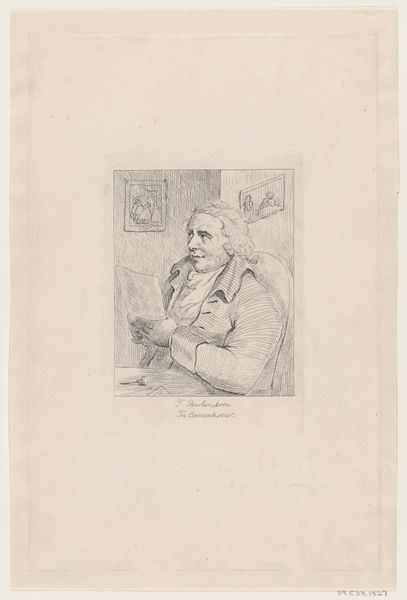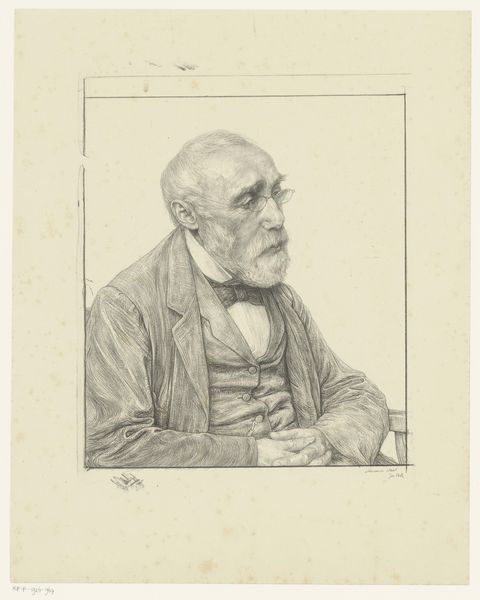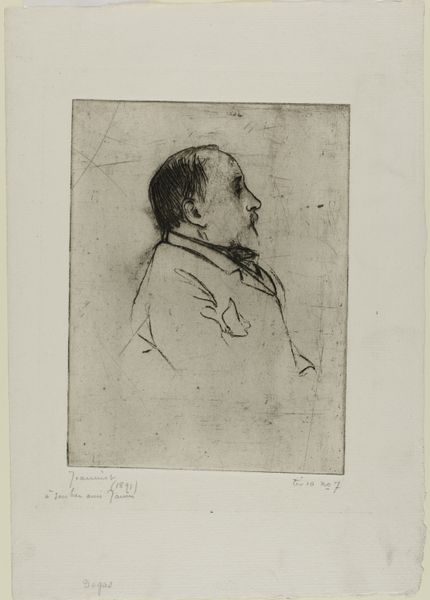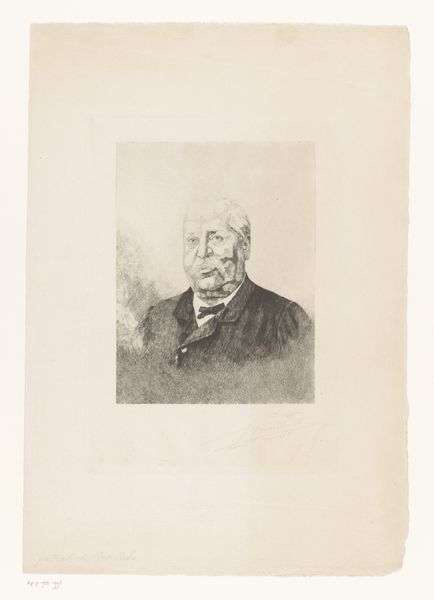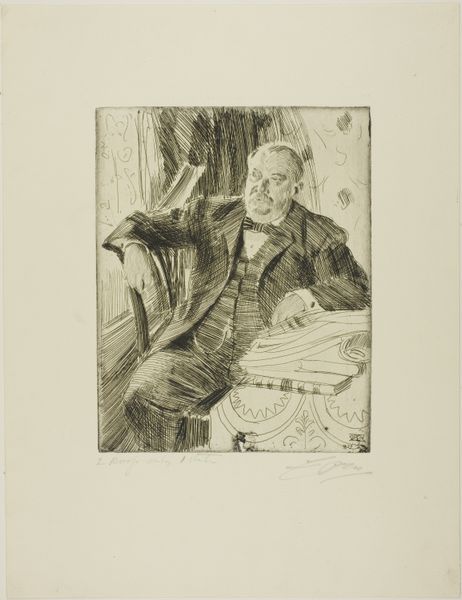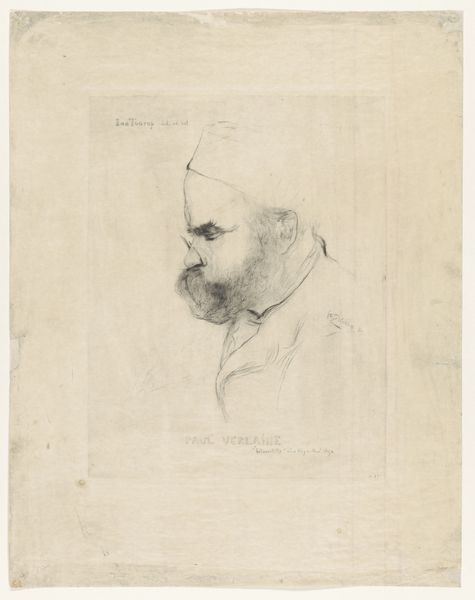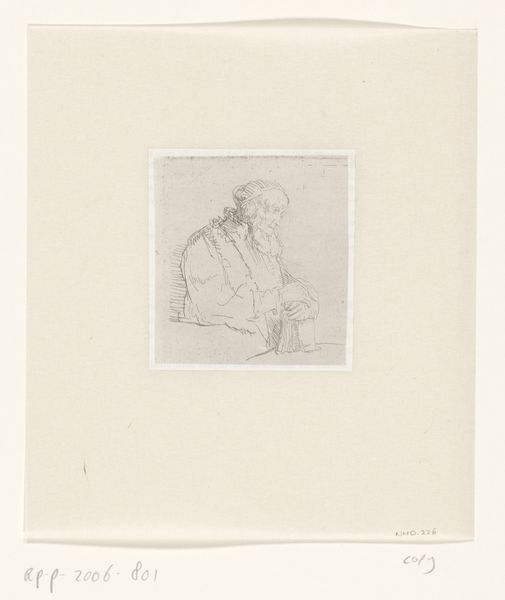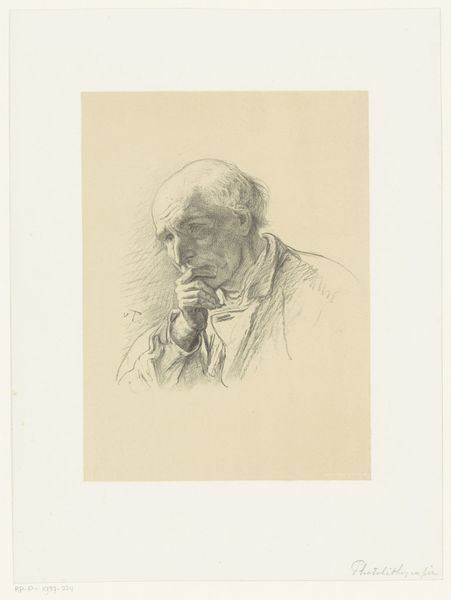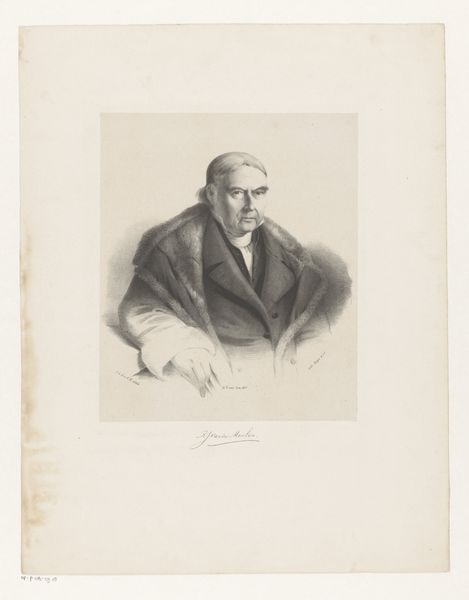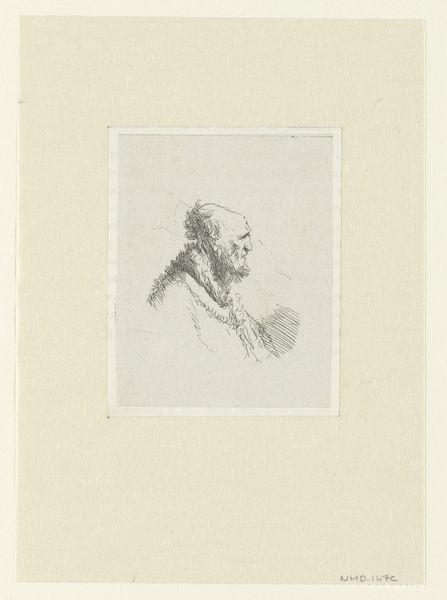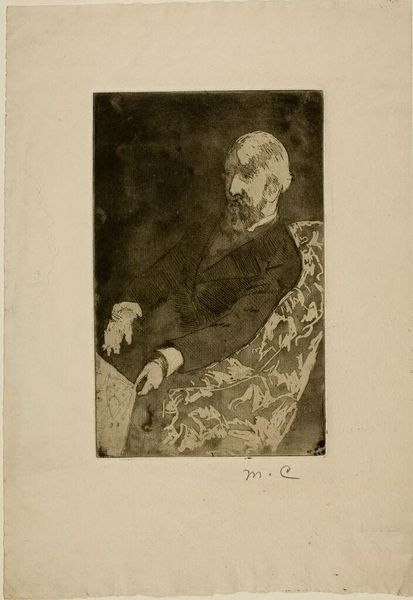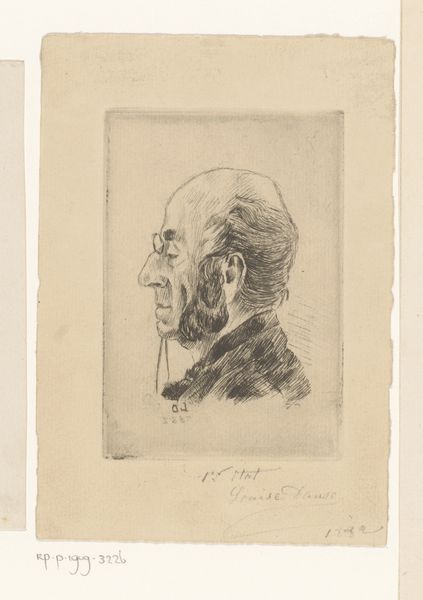
drawing, pencil
#
portrait
#
drawing
#
pencil
#
realism
Dimensions: height 318 mm, width 238 mm
Copyright: Rijks Museum: Open Domain
Curator: Louise Danse’s "Old Man with Walking Stick in a Chair," created in 1887, captures a quiet moment of reflection. Rendered in pencil, the work presents an aged figure seated, his hands clasped upon a cane. What are your first impressions? Editor: A feeling of solitude permeates the scene, doesn’t it? The sketchiness lends a vulnerability; he seems weary, perhaps contemplative of a life lived within the context of societal expectations of masculinity and aging. Curator: The drawing technique, certainly, accentuates that mood. Notice the artist’s precise control of line weight and value to describe form and texture. The delicate hatching builds volume in his face and coat, juxtaposed with the more spare depiction of the chair. Editor: That juxtaposition between the figure and his environment intrigues me. The rather simple, even bare, setting places focus squarely on him, stripping away potential distractions, demanding we confront our biases and fears around aging and dependence in patriarchal societies. The walking stick is almost like a phallic symbol – its placement on his lap hints at issues of aging and a shift in one's purpose in life. Curator: Interesting. I’d perhaps hesitate to ascribe such a direct symbolic reading. Instead, consider the composition; how the seated posture and the diagonal line of the cane create a dynamic tension within an otherwise static pose. It pulls our eyes across the paper and returns them to the focal point: his face. Editor: But can we divorce formal qualities from the cultural context of when, where, and why this portrait was made? The man’s posture and expression cannot be neatly severed from broader social power structures related to class and status that have contributed to the creation of stereotypical portrayals. How did this depiction reinforce or challenge ideas about aging? Curator: The challenge, I suppose, lies in determining artistic intention. Can we truly know the artist sought to critique or merely document? The technical mastery of the drawing, I’d argue, transcends any definitive socio-political reading. Editor: But by not acknowledging potential interpretations around marginalization and power dynamics, we risk perpetuating harmful stereotypes and missing important avenues for empathy and change through the encounter with art. I appreciate Danse's ability to draw out emotions through form. Curator: A valuable reminder to look beyond the surface and see both structure and the broader story embedded within. Editor: Indeed, art offers endless opportunities to explore humanity.
Comments
No comments
Be the first to comment and join the conversation on the ultimate creative platform.
